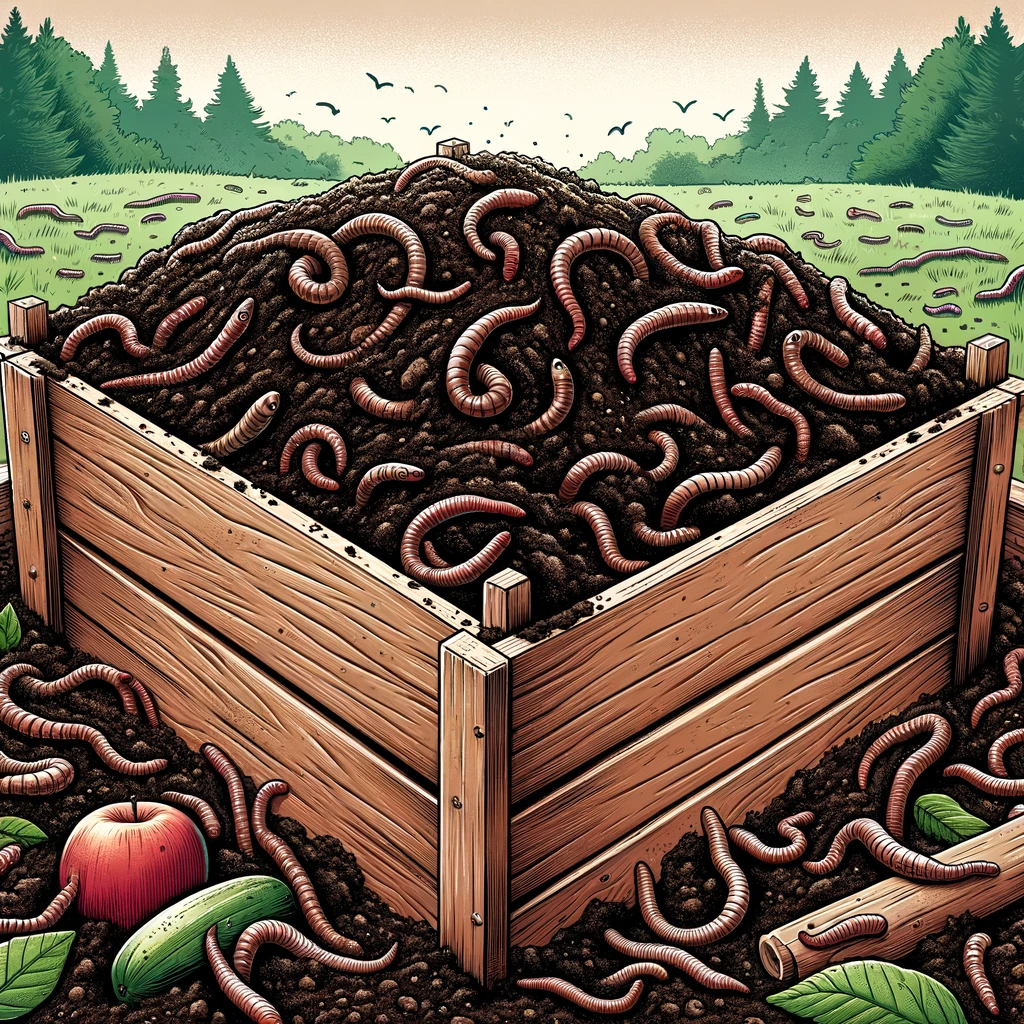Do you want to ensure a steady supply of high-quality fishing bait without having to break the bank? Consider growing your own worms for fishing. This may seem daunting, but with the right knowledge and methodology, anyone can become a successful worm farmer. This article will guide you through the process of worm farming for fishing and help you cultivate a thriving bait supply for your next fishing trip.
Key Takeaways:
- Growing your own worms for fishing can be convenient and cost-effective.
- Starting a worm farm is the first step in ensuring a sustainable worm population.
- Raising worms specifically for fishing bait requires specific knowledge and techniques.
- Cultivating worms effectively involves creating the ideal environment, managing moisture levels, and utilizing proper feeding and composting methods.
- With the help of these tips and tricks, anyone can become a successful worm farmer and have a constant supply of high-quality bait for their fishing adventures.

Table of Contents
How to grow worms for fishing?
The foundation for growing your own worms for fishing is starting a worm farm. Although it may seem daunting at first, the process is straightforward with the right guidance. The following best practices for worm farming will help you create a sustainable and successful worm population, providing a consistent supply of bait for your fishing endeavors.
Selecting the Right Container
The first step in starting your worm farm is to select a container that is suitable for your needs. Choose a container that is spacious enough to accommodate the number of worms you plan to breed, allowing ample room for growth.
There are several options to choose from, including plastic bins, wooden boxes, or even specialized worm farming containers. Consider the size, location, and ease of access when selecting the perfect container for your worm farm.
Creating the Ideal Environment
Creating the ideal environment for your worms is crucial to their growth and survival. The ideal temperature for worm breeding is between 50-80°F, and the moisture level should be consistent at around 70-80% humidity.
Place your container in a shaded, cool area to provide the optimal temperature for your worms. Ensure proper ventilation to maintain the ideal moisture level and prevent the growth of mold or other harmful bacteria.
Choosing the Right Worms for Fishing
Not all worms are created equal when it comes to fishing bait. The most popular and effective worms for fishing are red wigglers, European nightcrawlers, and Canadian nightcrawlers.
Choose your worms from a reputable supplier to ensure their quality and health. Proper care and feeding can help the worms grow faster and stronger, providing a consistent supply of high-quality bait for your fishing needs.
Starting a worm farm for fishing is an investment of time and effort, but the rewards are well worth it. By following these best practices for worm farming, you can create a sustainable and bountiful worm population for all your fishing adventures.
Raising Worms for Fishing Bait
Now that your worm farm is up and running, it’s time to focus on raising worms specifically for fishing bait. Here are some valuable worm farming tips for anglers:
- Provide proper nutrition: Worms need a balanced diet for optimal growth and reproduction. Feed them a mixture of organic materials like fruit and vegetable scraps, coffee grounds, and eggshells.
- Maintain ideal temperature: The ideal temperature for worm farming is between 60-80°F. Avoid extreme temperatures and monitor your farm to ensure it stays within this range.
- Regularly maintain your farm: Proper maintenance is key to a healthy and happy worm population. Ensure adequate moisture levels, regularly separate mature worms from the bedding, and remove any dead worms, uneaten food, or other debris.
Following these worm bait farming techniques will help ensure a healthy and plentiful supply of fishing worms. Additionally, consider investing in a worm bin harvester to easily separate mature worms from the compost for use as bait.
Cultivating Worms for Fishing
If you want to cultivate worms for fishing, it is essential to create the perfect bedding environment. By doing this, you give the worms a comfortable place to live, reproduce, and grow, resulting in a steady supply of bait for your fishing needs. Here are a few tips for cultivating worms effectively:
- Create the ideal bedding: Use shredded paper, coconut coir, or peat moss to create the perfect bedding environment for your worms. Make sure to moisten the bedding material to the right level and avoid excess moisture, which will allow bacteria and molds to thrive.
- Manage moisture levels: Worms need moisture, but they also need air. Provide adequate ventilation by turning the bedding and keeping it slightly loose. Regularly check to ensure a consistent level of moisture in the bedding.
- Harvest worms effectively: When the bedding has a good population of worms, it’s time to harvest them. The easiest way is to pull all the bedding aside, add fresh bedding and food, and wait for the worms to migrate to the new food source. Scoop up the worms and add them to your fishing bait box.
Another useful feeding method is to add food scraps, such as fruit and vegetable peelings, to the bedding. The worms will break down the waste and produce high-quality castings, which you can use as a nutrient-rich fertilizer. Additionally, composting your waste is an excellent way to enhance the quality and health of your worms.
By following these tips, you can cultivate your own worms for fishing successfully. Remember, worm farming for fishing is a fun and rewarding hobby that saves you money in the long run. Happy fishing!
Conclusion
Congratulations on completing this guide on growing your own worms for fishing! By following the tips and tricks we’ve outlined, you now have the knowledge and skills to start your own worm farm and cultivate a steady supply of bait for your fishing adventures.
Remember, starting a worm farm for fishing is not only convenient but also cost-effective. You can save money and ensure a constant supply of high-quality bait by growing your own worms. Plus, it’s a fun and rewarding activity that can enhance your overall fishing experience.
So what are you waiting for? Start your worm farm today and discover the joys of worm farming for fishing. Happy fishing!
FAQ
How do I start a worm farm for fishing?
To start a worm farm for fishing, you will need to select the right container, create a suitable environment, and choose the right worms. It’s important to provide bedding, maintain moisture levels, and feed the worms properly. Monitor the temperature, and regularly harvest worms for fishing bait.
What are the best practices for worm farming for fishing?
Some of the best practices for worm farming for fishing include keeping the worms in a well-ventilated and insulated container, ensuring proper feeding and nutrition, maintaining the optimal temperature and moisture levels, and regularly monitoring and managing the worm population.
How can I raise worms specifically for fishing bait?
To raise worms specifically for fishing bait, it’s important to provide a nutritious diet, maintain suitable temperature and moisture levels, and regularly clean and maintain the worm farm. Harvest the worms at the right time and ensure their health and vitality to maximize their effectiveness as fishing bait.
What are some tips for cultivating worms for fishing?
When cultivating worms for fishing, create a comfortable and favorable bedding environment, manage moisture levels to avoid saturation or dryness, and provide regular feeding. Harvest the worms using appropriate techniques to ensure a steady supply of fresh and healthy fishing bait.
How can growing my own worms for fishing save me money?
By growing your own worms for fishing, you eliminate the need to constantly purchase bait from stores. This can save you money in the long run, especially if fishing is a regular hobby of yours. Additionally, cultivating your own worms allows you to control the quality and availability of bait at any given time.
